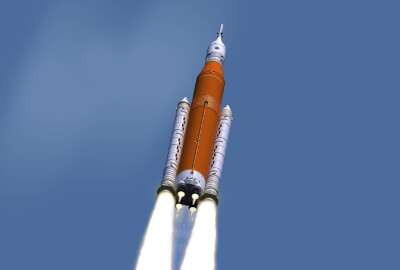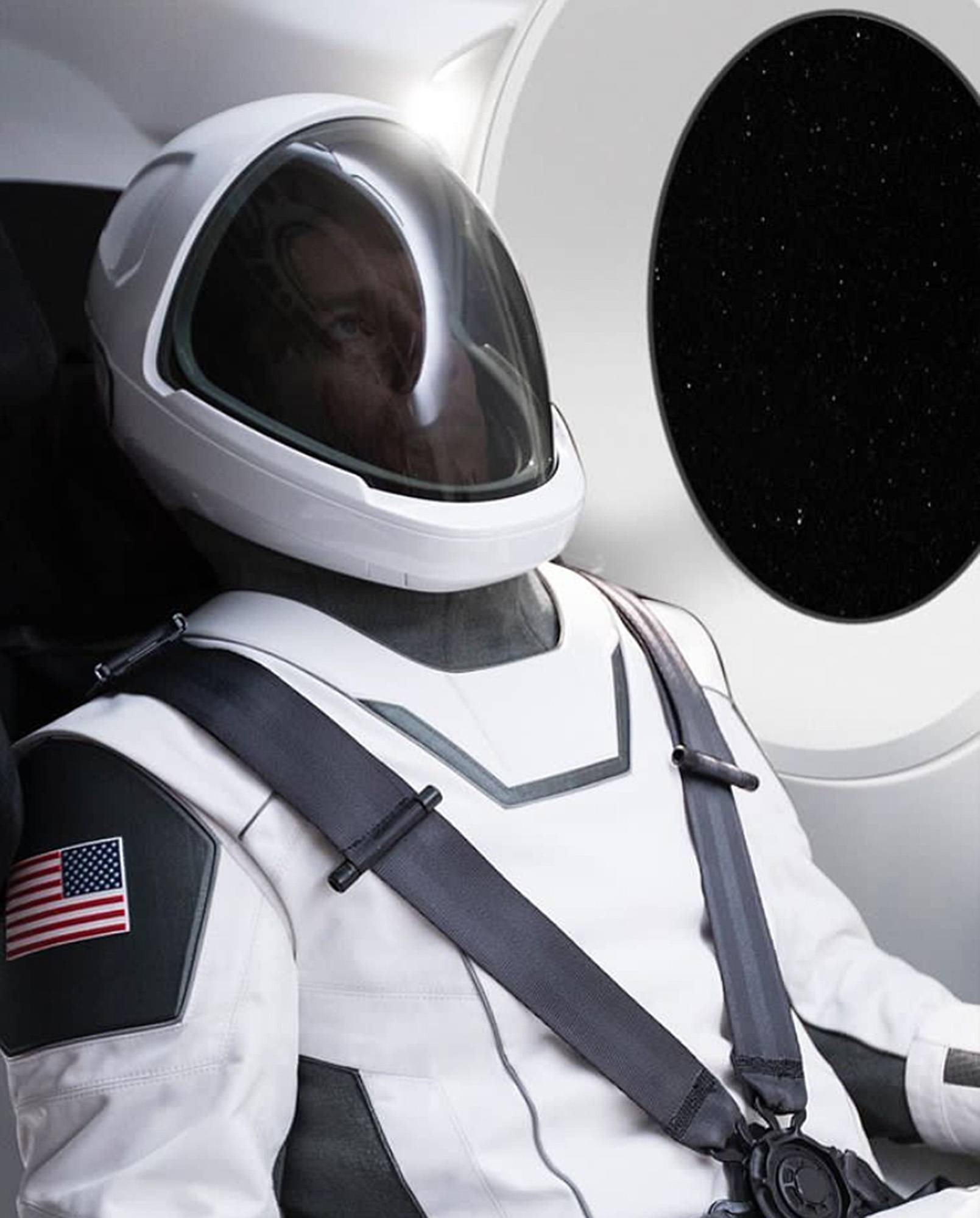
The ISS is long overdue for new wardrobe options
A new contract for new spacesuits on the International Space Station.
A new contract from NASA looks to create the next generation of space suits for astronauts. Tasked with the order is Collins Aerospace, a Raytheon Technologies business. Along with its other partners, it aims to design, develop and demonstrate the next-generation spacesuit for the International Space Station. To learn more, I got the chance to speak with Peggy Guirgis, who is General Manager of Space Systems at Collins Aerospace.
Interview transcript
Eric White A new contract from NASA looks to create the next generation of spacesuits for astronauts. Tasked with the order is Collins Aerospace, a Raytheon Technologies business. Along with its partners, it aims to design, develop and demonstrate the next generation spacesuit for the International Space Station. To learn more, I got the chance to speak with Peggy Guirgis, who is general manager of space systems at Collins Aerospace.
Peggy Guirgis So, as you know, Collins Aerospace was awarded the master contract for the Exploration Extravehicular Activity Services contract back in May of 2020. In December of 2022, we received a task order for designing development associated with ISS program EVA [extra-vehicular activity] capability. Right now authorized for a 13 week period of performance for our design and development of that EVA solution up through CBR.
Eric White And so this is a contract longstanding that you all have been given to create new. Is this going to be new spacesuits? And if so, can you tell me a little bit about what some of the upgrades may be?
Peggy Guirgis Sure. Yes. This is a contract that will enable us to design, develop the next generation of spacesuits. As you may be familiar with the current spacesuits that on the International Space Station, they’ve been really the work horses associated with us at ISS. They’ve been supporting missions really dating back to shuttle. They went through an upgrade to enable them to support the International Space Station. But we are the crux of that design. A lot of that content is actually designed way back to the late seventies. So it’s time for the next generation of capability, and that’s what this contract is designed to do. When we look at the architecture for our next generation of spacesuit, it actually it’s lower volume, lower mass. And it can actually accommodate a broader range of subjects with fewer sizes. So when you think about the overall lifecycle cost of an EVA system, it actually reduces through the free will, it provides additional capability for EVA duration. And so it’s in the past is now a longer period of time with increased flights or it also reduces the amount of logistics that’s required between each EVA. In the next iteration, we use what’s out of that room. And so it’s actually constantly regenerating during the EVA. So crew member, once they’re done, they don’t have to take the canister out. Somebody will take it out at that system which is retained within the suit, lowering the overall frame into EVAs. When I talk about we increase the range, we can actually accommodate more crew members with fewer sizes. So we are transitioning to use a suit from one to over to the next actually takes less to replace the suit for that.
Eric White Gotcha. And you spoke about how the earlier suits, you know, some of the designs went back all the way to the 1970s. The fact that there hasn’t been a major upgrade, does that just speak to how well those suits were made and how, you know, they were doing the job? So what if it’s not broke? Don’t fix it.
Peggy Guirgis Absolutely. Those suits were designed with a tremendous amount of engineering expertise. They certainly did well beyond what they were originally designed to do. They were initially designed just for a two week space shuttle mission where they would go up, they’d support a handful of EVAs, and then they’d be returned to the ground for a full tear down at the surface. As we transition to the International Space Station, the teams looked at the overall design margins. They looked at that, the system itself. They did make some upgrades, but ultimately we were able to transition that core design to be able to support six years on orbit at a time up to 25 EVAs before having to be brought down. Pretty remarkable overall. We’ll talk about your bang for the buck. We’ve certainly gotten more than our fair share out of those spacesuits. Now, we’ve learned a lot through sustained operations on the International Space Station and things that we would want to do a little bit differently, like separating out the water loop. And that has been done in this next generation system. And we’ll talk a little bit about the consumables and what’s required there and the logistics that go with that. So minimizing the associated logistics to enable another element of things that we incorporated. And at the time the suits were designed, we have a small range of monitoring that we needed to nominate because in a lot of places it was your fighter pilots, those types of individuals that were going to be going into space. Now when we think about not only ISS but about operations in our low-Earth orbit holistically, we also think about the commercial space aspect where you may have individuals that are wanting to go out for a spacewalk on one of the commercial platforms and what are their needs, what are their capabilities for those types of mission and factoring that in as well.
Eric White And so the schematics that you just mentioned about having to fit so many different operational needs are these and excuse me for making the sound way too simple than what it is, but, you know, are these made to order or how are these going to be produced actually?
Peggy Guirgis They’re not made to order. But we’re looking at the broad we backlog. So these suits are not made to order. But what we are doing is really a thorough assessment of the overall needs and decomposing those into the requirements to ensure that, again, the base architecture is flexible enough to support the multiple mission demands.
Eric White And when in designing these suits, I imagine that you are looking for that long term use that the previous suits had served. What were some of the aspects of this suit that will make sure that they are able to be used, you know, for a long time?
Peggy Guirgis Well, absolutely. That’s a great question. So to be able to ensure that they will be used for a long time. Key there is flexible and extensible architecture. So incorporating features that enable us to upgrade that to support different missions. And so we will establish the architecture, determine between your individual space station, what’s needed. If you’re looking at those operational concepts, the driving requirements and designing the for the system to be able to accommodate both of those and then actually add in capabilities as are needed to that that are specific to that particular destination. I’ll use the example of boots. So for the International Space Station, we have this also associated with the existing infrastructure. So there are foot restraints that crew member needs to get into to be able to restrain themselves as they’re working on the hardware. That’s next. It’s the infrastructure. So it makes sense that that means for our next generation system can be kind of compatible with the International Space Station. But when you go to the Artemis solutions that we’ve seen in the past to be able to walk from your surface, you’re right. You’re in a partial gravity environment. You have dust challenges you have radiation specs. So so our suit has to be able to include both of those.
Eric White And yeah, on on that. I think this would make a great segway to it. You know, it’s a common folly that the space is so vast, but when you get up there spaces at a bare minimum, where were you able to kind of shave off a few, you know, just millimeters or inches off of the suits just because, you know, they are they are big, big pieces of equipment. Where were you able to sort of cut down to make these things a little bit more able to fit them in the over tight bin if need be?
Peggy Guirgis Sure. Yeah. Some of it was down to the technologies that we use that are a little bit enable us to pack more into a smaller volume. In other words, you know, it’s the type of material that we have, you know, used or selected for, you know, some of the the structure itself. In other cases, when we talk about mining, we’re also talking about global volume. The terms of the logistics need to be able to support the multitude of crew members. So by reducing sizes, we reduce volume and mass that has to be stored on space station to be able to accommodate all of those. So again, if there’s a multitude of different areas that we are able to reduce that a lot.
Eric White Gotcha. And just finishing up here on the research side of things. Can you just tell me about what are some of the new and improved practices for researching the types of materials that go into making a space suit nowadays? I know that in the past they, you know, even would send them underwater and stuff like that. But what what do you what were some of the ideas that you all used in order to make sure that these were compatible with space missions?
Peggy Guirgis Yeah, So that’s a great question. Actually, a lot of the same techniques that we use to validate the materials remain the same today. We’ve learned that just a tremendous amount over the course of not only when we designed and developed this current generation of spacesuit, but as we have gone through, we experience on International Space Station more and more and more that we’re asking about, you know, spacecraft, maximum allowable constituents, all of those different elements that factored into that the validation that we’ve got to be able to do for each of the different points. So we are still going to be doing that testing. We’re going to be doing thermal testing of different aspects to ensure that we have broad verification, all of the materials which are the things that we want to do, adverse impacts not only for crewmembers but for the spacecraft as well.
Eric White Got it. And probably my most important question, what can be done if a if if an astronaut’s toes itch? Is there any technology for that? And on the bigger point of astronaut’s comfort, what does that what can that play?
Peggy Guirgis Yeah, that’s a great question. And fortunately, you know, at that point, when you’re fully encompassed in the spacesuit, you don’t really have a lot of options.
Eric White That sounds like torture.
Peggy Guirgis Yeah. Yeah. I would focus on the other task that at hand. Distract yourself.
Eric White When you’re when you’re worried about not dying, I’m sure that an itchy toe doesn’t hurt. But did you consult with any with. You know, there are tons of people now that have had the experience going up there. Did you I imagine they played a role in the process as well?
Peggy Guirgis Absolutely. Our system was actually designed by astronauts for astronauts. So we have actually taken that and user input to the next level. And they have been integrally involved throughout our process today. So we’re going to continue to involve crew members who have done EVAs who have a vested interest. We’ll be involving them throughout the entirety of the development process to ensure that all of needs are appropriately considered and factored in. And I would say that we will really, at Collins Aerospace, have really been paving the way for EVA for decades. And this task order is a great opportunity to continue that. So we’re just really excited to be part of the next phase of EVA and partnering with them on this journey.
Copyright © 2024 Federal News Network. All rights reserved. This website is not intended for users located within the European Economic Area.
Eric White is news anchor and Federal Drive producer at Federal News Network.
Follow @FEDERALNEWSCAST





